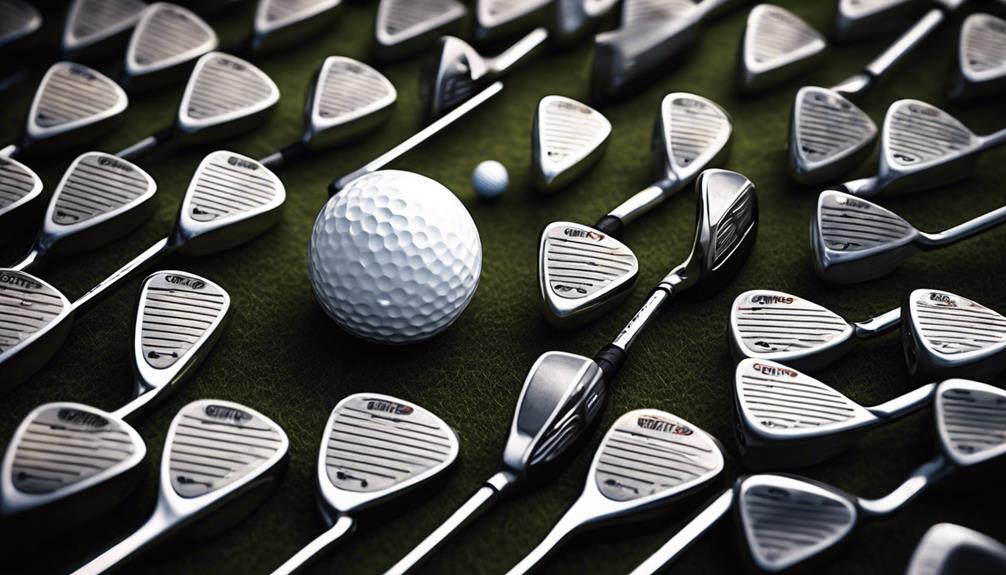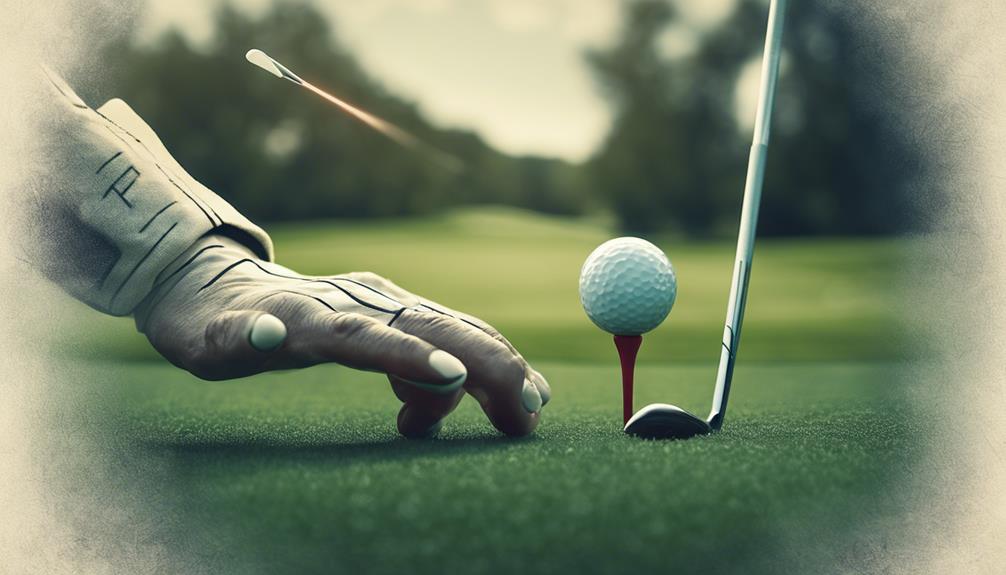- 7 Top Flite Golf Clubs XL for Improved Performance - September 28, 2024
- Top Flite Golf Clubs: Top 5 Reasons to Choose Them - September 28, 2024
- Top 3 Golf Club Fitters for a Perfect Swing - September 28, 2024
You hold a golf club in your hands, a precision instrument designed to harness your energy and propel a ball towards its target. The club's components – grip, shaft, and head – work together to achieve that goal. The grip provides a comfortable hold, the shaft transfers energy from your swing, and the head strikes the ball. Understanding each component is fundamental to mastering the basics, such as energy transfer, clubhead loft, and grip control. As you explore the intricacies of your golf club, you'll reveal the secrets to better distance control and accuracy, and unleash your full potential on the course.
Key Takeaways
- A golf club works by transferring energy from the golfer's swing to the ball through the shaft and head.
- The grip provides a comfortable hold, while the shaft acts as a lever to amplify the golfer's power and speed.
- The head of the club strikes the ball, with its shape, size, and loft determining the ball's trajectory and distance.
- The club's design and materials, such as carbon fiber, influence its performance, forgiveness, and accuracy.
- The golfer's technique, including grip, stance, and stroke tempo, also impacts the club's effectiveness in hitting the ball.
Golf Club Components Explained
When you grasp a golf club, you're holding a precisely engineered tool comprising three main components: the grip, shaft, and head, each playing a critical role in the club's performance and your overall game.
The grip, usually made of rubber or leather, provides a comfortable and secure hold, allowing you to maintain control throughout your swing.
The shaft, made of materials like steel or carbon-fiber composite, connects the grip to the head, transferring energy from your swing to the ball.
The head, with its varying designs for woods, irons, and putters, is responsible for striking the ball.
Understanding these components is essential for selecting the right clubs and optimizing your performance on the course.
By recognizing the importance of each part, you'll be better equipped to choose clubs that suit your swing style and make adjustments to improve your game.
With a solid grasp of golf club components, you'll be well on your way to mastering the game.
Club Types and Their Functions
With a solid understanding of golf club components, you're now ready to explore the various club types and their functions, each designed to tackle specific shots and challenges on the course.
You'll discover that woods are built for long-distance shots, featuring larger heads and lower lofts compared to irons. Irons, on the other hand, offer versatility for various distances and shot types, catering to mid-range play.
When it comes to accuracy on the green, putters take center stage, boasting a flat face to roll the ball smoothly into the hole. Hybrids, a fusion of woods and irons, provide forgiveness and distance for those tricky shots.
Each club type serves a specific purpose in your game, emphasizing the importance of selecting the right club for each shot. Understanding the functions of these club types will help you navigate the course with confidence, achieve greater distances, and enhance your overall accuracy.
Design Variations and Innovations

As you explore the world of golf club design, you'll discover a vast array of variations, each catering to unique preferences and playing styles, from innovative face patterns to cutting-edge materials that redefine performance.
The evolution of golf club design has led to the creation of customized putters tailored to individual preferences, boosting confidence and performance. You'll find that different materials, such as stainless steel and titanium, have revolutionized putter design, enhancing durability and performance.
Additionally, varying putter designs offer distinct alignment aids and stroke tempo options to improve putting success. The golf club heads, with their carefully crafted loft angle and sweet spot, work in harmony to optimize your swing.
Ancient Golf Clubs may have started it all, but modern designs have pushed the boundaries, incorporating materials like Carbon fiber to adjust the center of gravity.
As you navigate the rules of golf, you'll appreciate the nuances of each design variation, suited to different types of golf. Embracing these innovations will elevate your game, helping you master the Royal and Ancient game.
Putting Techniques and Performance
You'll find that mastering various putting techniques is essential to enhancing your overall game, as even minor variations in grip, stance, and stroke can significantly impact your consistency and accuracy on the green.
Different putting techniques, such as traditional, cross-handed, and claw grip, can influence your stroke consistency and accuracy.
To improve your putting, consider using alignment aids like lines on the ball and putter face to help you aim correctly.
Here are some key factors to focus on:
- Alignment aids: Use visual cues to confirm your putter face is square to the target line.
- Stroke tempo: Develop a consistent rhythm and pace to control distance and direction.
- Practice time: Dedicate time to perfecting your putting stroke, just like professionals do.
Mastering Golf Club Basics

Mastering the basics of your golf club is fundamental to improving your overall game, and it starts with understanding how each component works together to produce a consistent, accurate swing.
As you swing, energy transfer from your body to the clubhead is pivotal, and it's affected by the club's design and your grip. The clubhead loft determines the ball trajectory and distance, so it's essential to choose the right club type for your shot – whether it's a wood, iron, or putter.
The grip and shaft play a vital role in controlling the club during the swing, ensuring a smooth energy transfer. By understanding how each club component functions, you'll be able to master the fundamentals of golf. This will give you more control over your shots, allowing you to achieve better distance control and accuracy.
With practice and patience, you'll be able to develop a consistent swing that produces consistent results. By mastering golf club basics, you'll be well on your way to improving your overall game and taking your skills to the next level.
Frequently Asked Questions
What Does It Mean to Let the Club Do the Work?
When you let the club do the work, you're harnessing club dynamics to optimize power transfer, ensuring precise timing and clubface impact, while maintaining a proper grip, smooth follow-through, and controlled swing speed for exceptional ball control.
How to Know What Club to Use in Golf?
You master club selection by considering distance control, swing speed, and trajectory control, then factoring in shot shaping, lie angle, and loft adjustment based on course conditions and your skill level.
What Is an a Club for in Golf?
You'll be amazed to know that a single degree of club face angle adjustment can alter ball flight by 10 yards! As you choose a club, consider swing mechanics, club speed, and impact angle to achieve ideal ball flight and distance control.
How Can a Golf Club Make Money?
You can boost revenue by securing sponsorship deals, hosting lucrative golf tournaments, and driving merchandise sales, while also offering club memberships, golf lessons, equipment rentals, and food and beverage sales, plus corporate events and golf course fees.
Conclusion
As you step onto the green, remember that mastering golf club basics is key to a perfect swing.
With a deep understanding of club components, types, and design variations, you'll be well on your way to improving your game.
Notably, did you know that a golfer's swing speed can reach up to 100 mph, generating forces of over 2,000 pounds per square inch?
With practice and patience, you can harness that power to drive your way to success.




